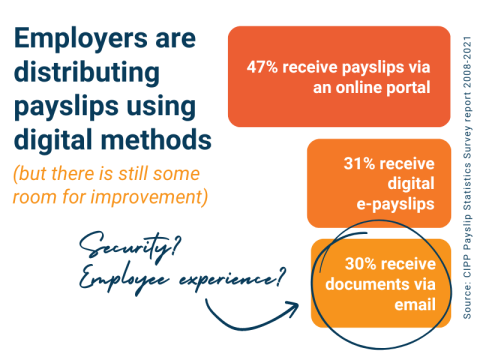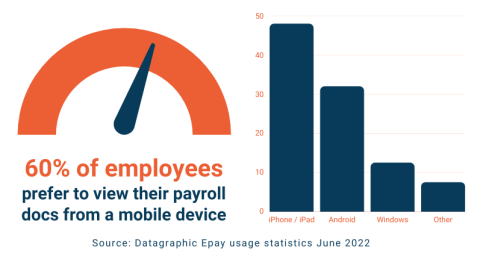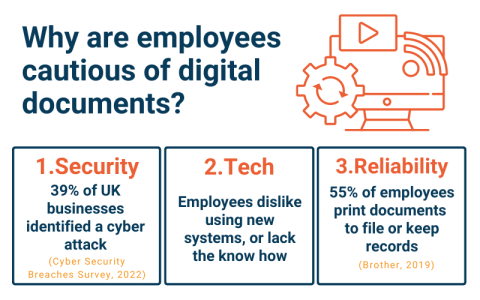In and out of the workplace, technology has become integral to everyday life.
According to the most recent Office of National Statistics numbers, 92% of UK adults were internet users in 2020.
As employees, many of us now use software to carry out jobs or connect remotely to access systems to facilitate the day job.
In our personal lives, we shop, bank, and communicate using internet technologies.
Irrespective of whether an employee’s job requires them to use technology, they are familiar with digital services. So why not let employees access payslips digitally too?
Employee communications and digital payslips software
Employers are increasingly looking for payroll portals that offer a digital-first approach.
Connecting with employees via digital channels has been a strategic approach over recent years.
Accordingly, a move to digital payslip software makes sense as it’s estimated that 88% of the world’s population owns a smartphone.
Employees are ready for online payroll documents, and self-service portals offer a convenient way to communicate changes and impacts instantly.
Multichannel employee communications facilitate a better experience to build greater employee satisfaction.
Employee communications software, like Epay, can deliver digital payroll information online.
The most useful digitised pay-related documents include payslips, P60s, P45s, P11Ds, timesheets and reward statements.
As well as these frequent payroll items, organisations can also use portals to share other company communications, accompanying letters, guidance or policies to keep employees better informed.
With digital payslips software, documents can be delivered at a click of a button and made readily available 24/7.
Employers are distributing payslips using digital methods
The adoption of digital payroll tools has increased over recent years, particularly since COVID-19. Notably, however, there is still some work to do.
The latest Payroll Statistics Survey by the Chartered Institute of Payroll Professionals highlights how organisations distribute payslips.
The vast majority (77%) offer an employee self-service platform. 36% of those surveyed also said they email payslips directly to employees.
Conversely, 2% confirmed that despite the risks, they sent payslips via email without password protection.

Although this number is small, employees have no protection for their personal information. A portal like Epay is more effective and reliable and offers a high level of security to protect users.
How users access payslips
The CIPP data shows how organisations are delivering payslips and other payroll information.
However, how employees prefer to receive communications will depend on their individual preferences.
The retail industry, for example, has a high proportion of Millennials in the workforce, which is traditionally a difficult demographic to engage. Millennials prefer using and consuming information via mobile phones rather than printed correspondence.
Using a mobile-compatible platform allows access to these otherwise harder-to-reach pockets of the workforce. Automating digital documents removes barriers to accessing information, physical or otherwise.
To emphasise this point, internal data from our Epay platform shows that 60% of employees prefer to view their payroll docs from a mobile device. iOS is the most popular (48%), with Android operating systems in second place (32%).

Not everyone wants online documents, however. Some payroll teams are still printing and distributing printed payslips.
The report found that 22% of UK organisations still print and send payslips home. This could be due to preference or simply a legacy process.
Why are employees cautious of digital documents?
Security is a big concern for individuals. 39% of UK businesses identified a cyber attack, some of which have been high-profile and reported in the media. As a result, employees can feel nervous about another cloud-based portal containing their personal information.
Technology can also be uncomfortable as humans don’t always like change. Employees may dislike using new systems or lack the know-how to remember passwords to a new application.
And if they can’t log into a system for some reason, they can’t see their information when they want to. 55% of employees print documents to file or keep records, and some people are more comfortable with a hard copy.

Employees need not worry. No system can prevent users from forgetting their passwords or occasional periods of essential maintenance from time to time. Software providers should, however, have the correct assurances to guarantee security. Cloud technology relies on embedding strong security credentials to reassure employees that their data is safe and the system is reliable.
These points aside, multichannel employee communications portals can provide a whole host of benefits for organisations.
Benefits of multichannel employee communications
- A portal offers flexibility. Employees can choose between digital or paper documents and receive the correspondence in their preferred format.
- Communication software can facilitate better communication with employees. Colleagues receive a better overall employee experience from receiving information more effectively, and organisations can share company updates at the press of a button.
- Portals are more convenient. Users can review or download docs with no additional requests to the payroll department and access them 24/7/365.
- Digital payroll documents can save money. By sending fewer printed payslips and other pay-related documents, organisations can save on printing, supplies, and postage costs.
- Teams can work more efficiently. Payroll and HR teams eliminate the process of manually generating, printing and distributing payslips. They may also receive fewer inbound queries for copies of documents or other pay-related issues.

How do employees access information?
Here’s our full infographic on digital payroll information.



